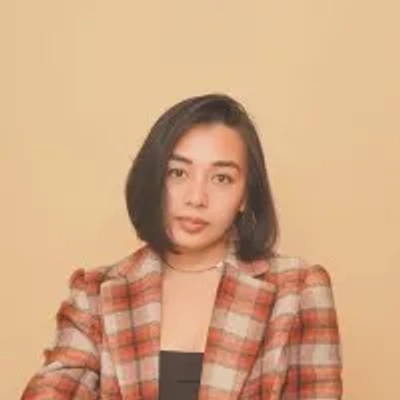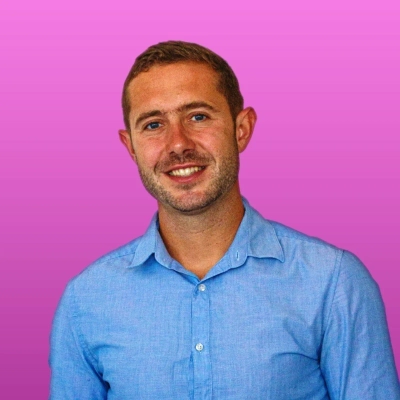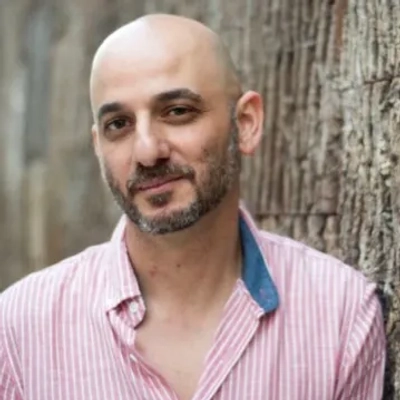11 Essential Questions to Ask Commercial Clients at the Start of a Project
Embarking on a commercial project requires careful planning and strategic questioning. This article presents essential questions to ask clients at the project's outset, drawing from insights shared by industry experts. From prioritizing business continuity to evoking desired feelings in space design, these key inquiries will set the foundation for successful commercial endeavors.
- Prioritize Business Continuity in Commercial Projects
- Uncover Underlying Workflow Issues for Effective Design
- Align HVAC Design with Client Priorities
- Identify Key Message for Impactful Displays
- Understand Real Space Usage for Functional Design
- Define Success Criteria to Guide Project Approach
- Consider Long-Term Goals in Waterproofing Solutions
- Choose Live Moss Design for Aesthetic Appeal
- Capture Brand Story in Custom Apparel
- Evoke Desired Feeling in Space Design
- Solve Day One Problem for Focused Solutions
Prioritize Business Continuity in Commercial Projects
For a commercial client, the most essential question I ask at the start of a project isn't about the roof itself. It's this: "What can we do to make sure we don't disrupt your tenants, your customers, or your business operations?" That single question is the most crucial part of my initial conversation with a commercial client.
Their answer completely shapes my plan. If I'm working on a doctor's office, they might need us to work on weekends so they don't have to close. If it's an apartment complex, they'll want us to make sure we don't block off parking spaces during the day. Their answer tells me when to schedule the crew, where to stage the materials, and what kind of communication plan we need to have with their staff. The question moves the conversation from just being about a roof to being about their business needs.
The reason this is so crucial is that a commercial client isn't just worried about a leak; they're worried about losing money. When I ask that question, they see that I'm thinking about their bottom line. It shows them that I'm a professional who respects their business. It sets a tone of partnership, not just a contractor-client relationship.
My approach has led to much smoother projects and repeat business. When a commercial client trusts that you won't disrupt their operations, they are more likely to hire you again for the next building or the next project. My advice is simple: stop talking about your business and start talking about theirs. The most important questions aren't about the job; they're about the client's needs. If you can solve their biggest problems, the work will follow.
Uncover Underlying Workflow Issues for Effective Design
The most important question I ever ask a commercial client is: "Can you talk me through the current workflow for a fundamental action and explain what you or your team are most frustrated by?" This question is significant to ask because it takes the discussion to a deeper level than simply listing desired additions or new features. Instead, it addresses the actual, underlying problems. A client might say they are looking for more storage, but by walking through their process, they might reveal that the real issue is a disjointed workflow that requires them to cross the room to access tools or materials frequently.
Their answer completely informs my design approach, as it means I can design a solution that ultimately improves efficiency, not just a visual upgrade. I am usually only making notes based on their frustrations because the result is valued higher than the media they asked for. For example, a client is looking for a desk for their home office, but they are just as unhappy with their cluttered and messy workspace due to poor cable management. In this instance, my design approach would focus on providing a clean, integrated solution to a frustratingly broken workflow, and the client would be far happier after we worked together. This question is of extreme value because it helps me to act as a strategic partner who helps them solve their problems, rather than just creating a few new things for aesthetic reasons.

Align HVAC Design with Client Priorities
One of the first questions I always ask a commercial client is: "What's the biggest priority for your space—comfort, efficiency, or long-term operating costs?"
Every business has different goals, and their answer completely shapes how we design the system. For example, a restaurant might say comfort is number one, since customer experience depends on it. In that case, I'll focus on zoning, air distribution, and humidity control so their guests always feel good, no matter where they sit. On the other hand, a warehouse or office might lean toward efficiency and operating costs, which means I'll look more at high-efficiency units, advanced controls, and maintenance-friendly layouts.
This question is crucial because HVAC isn't one-size-fits-all. A system that's perfect for a retail store could be totally wrong for a medical facility or a tech company with sensitive equipment. By understanding their main priority right from the start, I can avoid over-engineering things they don't need, keep the budget focused on what matters most, and make sure they're happy with the long-term performance of the system. It's basically the foundation for tailoring the whole project.
Identify Key Message for Impactful Displays
One essential question I ask commercial clients at the start of a project is: "What key message or outcome do you want your audience to take away from this display?"
I once had a client who initially focused on showcasing every promotion they had. Their answer revealed that what truly mattered was educating employees about new safety protocols. This completely shifted my design approach—I prioritized clarity, sequencing, and visual cues over flashy graphics.
The question is crucial because it uncovers the underlying goal rather than surface-level preferences. Understanding the core objective shapes layout, content hierarchy, and engagement strategy. Without this clarity, screens can end up cluttered or confusing, and the message gets lost. By starting with this question, I ensure every template, animation, and schedule decision directly supports the client's intended impact, making the solution measurable, practical, and effective.

Understand Real Space Usage for Functional Design
How do you actually use the space day-to-day?
Why this question is essential:
It reveals the gap between what clients think they need versus how they actually work. It uncovers workflow patterns that drive your structural and layout decisions. It identifies peak usage times, bottlenecks, storage needs, and circulation patterns. It shows which spaces are critical versus nice-to-have.
How their answer shapes your design:
If they say "we're constantly moving equipment between floors" - that drives your structural loading and access decisions. "Staff never use the break room" - tells you where to actually put social spaces. "Deliveries cause chaos every morning" - prioritizes service access and circulation design.
Why it's crucial:
It prevents designing spaces that look good but don't function. Your structural decisions need to support real usage patterns, not theoretical ones. It saves expensive changes when they realize the beautiful design doesn't work for their actual operations.

Define Success Criteria to Guide Project Approach
I begin by asking my clients to define their project success criteria. This question reveals their objectives, which determine both the communication style and selection of platforms for the project. The response determines all subsequent steps, including the tone of messaging and selection of platforms.
The client specified that his CEO's LinkedIn repost of the content would determine its success. Our entire approach shifted after this revelation because we created a straightforward, authoritative presentation that would make him feel proud to share it.
Our main responsibility consists of helping clients achieve success in their particular environment rather than pursuing personal creative satisfaction.
Consider Long-Term Goals in Waterproofing Solutions
The first question I ask is, "What are your long-term goals for the building?" This helps me understand whether the property will serve as a long-term investment, a tenant-occupied facility, or a resale project.
Their answer shapes the approach immediately. A property that will house critical operations for decades requires a solution that prioritizes durability and redundancy. A building slated for resale might demand cost-efficient solutions that still meet code but focus on marketability.
This question is crucial because waterproofing is not just about fixing today's problem; it's about protecting tomorrow's investment. Knowing the owner's vision allows me to align the design with both current needs and future expectations.
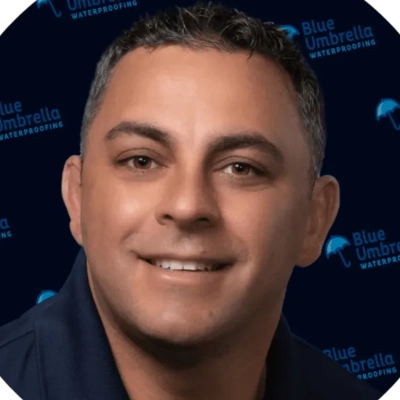
Choose Live Moss Design for Aesthetic Appeal
Here's what I do to ensure that my commercial clients' needs are met. To give you a background: My company, Moss Pure, makes the world's only 100% LIVE moss wall art and air filter. Other moss wall art is made of preserved moss which is no longer living, treated with toxic chemicals, and needs constant replacement.
I am always upfront that our product is actual real 100% LIVE moss, so the look of it will be different - it has a higher aesthetic because it's the real plant and isn't fake like preserved moss. The one question I ask is about live moss design. A lot of people don't know what live moss looks like because they're so used to only seeing the fake moss. So I show a mixture of Moss Pure's 3D design terrain and the different moss types they can use. I literally ask this one question at the beginning (included below):
Moss Designs:
Option 1: We can use different species of moss in our lush green including our live mood moss and sheet moss to create a 3D design. Picture here: https://drive.google.com/file/d/1gj0tg-LYkDJyxwkpdlu64tbMXRaaHo_G/view?usp=sharing
Option 2: We can use different species of mood moss and sheet moss that are different colors of light green and dark green. Picture here: https://drive.google.com/file/d/1UefkouuFReU7BEVOF1pEkGwQqTmfju4E/view?usp=share_link
Once I know what moss design they are going for, I can tell their design preferences with live moss and how the aesthetics will go. I always do design reviews and approvals throughout the process as well, but this one initial question of what direction to take guides the project along much more efficiently, lets me know how the client's design preferences are, and is just a proactive way of beginning and executing the project. Asking this one question helps to prevent design changes down the road which could be costly, inefficient, and unproductive to the project.
Please let me know if you have any questions.
-Jamie Mitri
Founder and CEO of Moss Pure
www.mosspure.com
jamie@mosspure.com
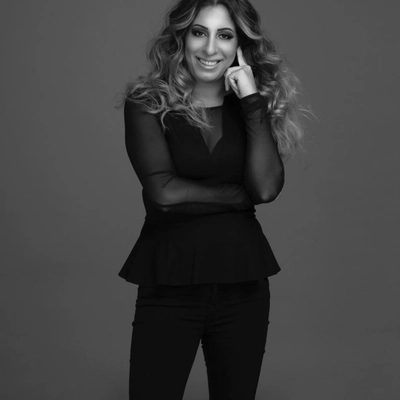
Capture Brand Story in Custom Apparel
One essential question I ask every commercial client at the start is, "What story do you want your custom tees or gifts to tell about your brand or occasion?" Their answer shapes everything because it goes beyond just design preferences or colors - it's about capturing the emotional connection. When a client shares their story, whether it's a company culture, a milestone celebration, or a community message, it guides our entire creative approach.
We focus on making not just garments, but pieces that speak to that meaning. This question is crucial because it grounds the project in purpose. Without it, the design risks being just visually appealing but missing the heart of why the client chose custom tees. Starting here helps us ensure each piece is genuinely personal and memorable, aligning our work closely with what truly matters to the client and their audience or recipients.
Evoke Desired Feeling in Space Design
Something I like to ask clients is what kind of feeling they are hoping to evoke in the space. Sometimes, the specific ideas a client has actually contradict the overall feeling or "vibe" of a space that they want to create. For example, if you are wanting to create a relaxing room with a coastal vibe, but you want to incorporate black design elements, that's not going to work very well. The same idea goes for things like wood stains or the type of natural stone products you want to use. By asking clients this question, it helps me get a better idea of what they are actually looking for and helps create a helpful dialogue where we can work together to decide on an end result we can all be confident in.

Solve Day One Problem for Focused Solutions
The first question I ask is, "What problem must this solution solve on day one?" That single answer clarifies priorities before any design work begins. Some clients emphasize efficiency, others highlight compliance, and others focus on user adoption. Their response dictates whether the design leans toward streamlined workflows, strict audit trails, or simplified interfaces. Without this clarity, it is easy to overbuild features that distract from the real objective. The question is crucial because it grounds the project in practical value rather than assumptions, ensuring that design choices align with measurable outcomes from the start.
